Minister for Defence Readiness and Industry Luke Pollard has argued that Britain’s warship industry is ready to equip allies with advanced vessels, provided the government and industry continue investing in skills and capacity.
On a visit to BAE Systems’ Clyde shipyards, he told the UK Defence Journal that the ability to sustain exports depends on a strong workforce and a modernised industrial base.
“If you were to boil down the defence industrial strategy to one word, it would be skills,” Pollard said.
“I want to see not only more private sector investment in skills such as the brilliant Skills Centre we’ve got here on the Clyde with BAE Systems, Rolls Royce’s similar offer in Derby, but I want to see the MOD support more skills development in regions up and down the country.”
He described skills as both a national security need and an economic opportunity.
“That’s an opportunity for young people to get the skills they need to have a lifetime of well-paid, good jobs ahead supporting our national defence. If we want to have a safer nation, we need to generate more military skills, both for the men and women in uniform, but for those people that support them in the private sector, in defence industries, and that’s why we’re investing more in skills nationwide.”
Pollard used the recent Norwegian order for Type 26 frigates as proof of what Britain can offer.
“Britain makes some of the best military equipment on the planet, and what we saw with Norway buying the Type 26 frigates was not just that they were buying the best in class anti-submarine warfare frigate on the planet, but they were buying a partnership, a partnership with the UK Government, with our military and with our industry,” he said.
He added that other nations are showing interest. “We feel there’s allies around the world that also are keen on that partnership and keen to purchase that high-end British military equipment to keep them and their allies safe, especially in this more difficult time, not just in the naval domain, but in air and land as well,” he explained.
“If we succeed in winning more of the export orders like we have with Norway, that not only creates and sustains more jobs in Britain, but it makes sure that all our allies in these difficult times are able to field the very best equipment to deter any aggression and defeat it if necessary.”
Pollard said warships built in Scotland and elsewhere are directly tied to countering adversaries. “We can see the threats from Russia to our allies on NATO’s eastern flank, with the incursions into Polish airspace, into Estonian airspace. We know the threats that the UK faces, not just from cyber disruption, but also from the Russian spy ships that have been sailing around our coast. Well, now is the time to invest in defence.”


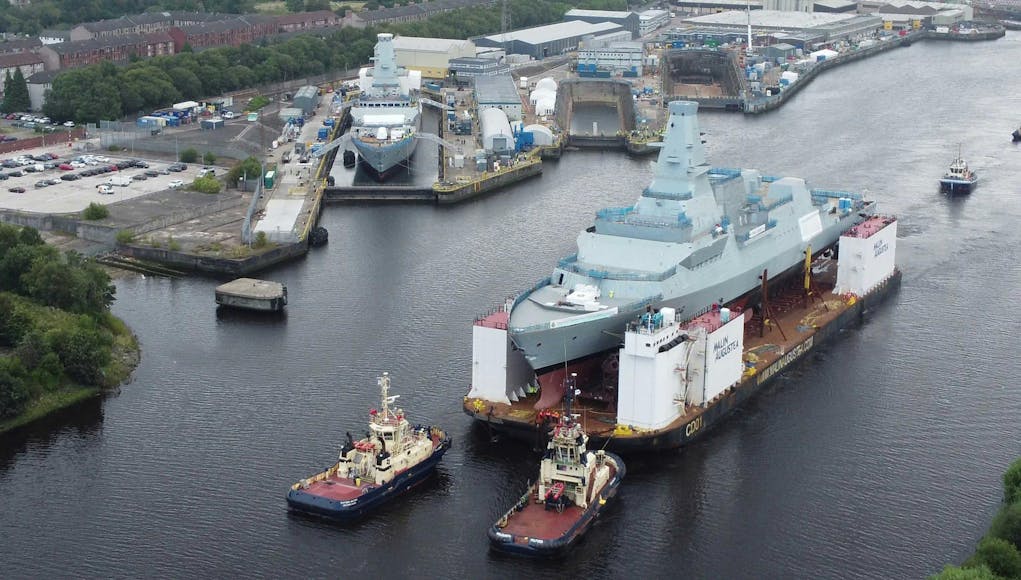


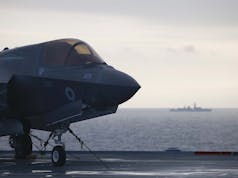
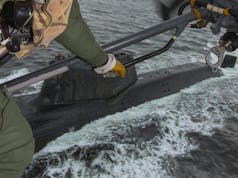

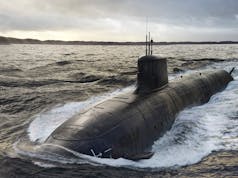


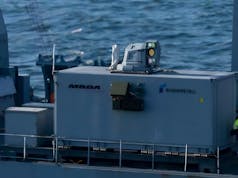


Pointless rhetoric without the government signing long term contracts to make investment possible. First rule of exporting is you have to have a good local market in order to get scale and drive down costs. Then you become competitive globally.
The quickest way to ensure expansion and longevity of this bubble is to order another 5 x T31/32 & 4-6 T26.
The T31’s will end up replacing rivers, hunts, sandowns, T26 will replace T23.
For T83 I believe we should go with a Karel doorman type support ship, that has excellent radar and sonar capabilities (probably via USSV) which is able to keep on station for long periods refuelling and maintaining the unmanned missile ships. The additional ability for these ships to act as amphibious landing bases would be a major plus, but not essential. 8 of these are needed alongside 48 missile ships. This will cost in region of £12bn or £1 bn pa over 12 yrs. it will take to build them. Given this is replacing 6 T45 + 3 bays, 2 albions, Argos and ocean this is not a bad trade off. Higher cost is down to the vast increase in VLS & missiles rather than ships themselves.
This gives us mass and lethality and an order pipeline. We can’t be in a position again where we have extended a class’ end of life to the point where they are unserviceable (T23) and not have replacements ready. The current situation is a national disaster at the worst time possible.
From what I’ve read so far about the multi-role strike ship (MRSS), may have some of the Karel Doorman capabilities and then some. But it won’t be meeting the T83 requirement.
Totally agree on the t23 point. the MoD and successive UK Governments should have not let the class soldier on for so long. all the information was their on the poor state of the hulls, but someone choose to ignore it!
I don’t think it’s a great idea to have the drone command ship as the amphibious landing ship. An Amphibious ship will always be more at risk as they have to get close to hostile shores. Being the drone command ship with the good radar that means if it’s lost then the drone ships also lose their good radar, and if the drones are lost this ship will lack VLS cells in numbers to protect itself.
Far better to have a Type 83 as a classic destroyer but with the data sharing to drone ships with 32 – 64 VLS depending on how many drones there are.
Our amphibious ships should be like the Juan Carlos, cheap, but with an amazing air wing and massive carrying ability. 1 Juan Carlos carries more than both Albion’s yet is much cheaper than two of them.
Understood, however modern amphibs will not go close in that will be done by smaller vessels like CB 90 or BMT Caimens.
The proposal I am making is in line with FSL and would see the mothership in the centre of a fleet, you are correct in stating the risks associated with this approach, no doubt there will be some remote command backup and the vessel itself must have close in protection.
I have prioritised fuel and 5CISTAR over amphib to keep assets on station as long as possible. I do think we will need between 2-4 FLO FLOs to make this work cost effectively (these should cost about £100m each)
There are options, this is my version
They’ll still have to close within 100-120 miles for the landing craft, which given the missile ranges they have places them comparatively close to danger. And lack of using an amphibious flattop means there are very few helicopters for any landing which can provide greater range and are less likely to be destroyed in a contested landing than a slower moving landing craft.
It is an inferior approach for amphibious activities in my opinion, and for classic destroyer work, an actual destroyer with data links to drone ships will be superior. Faster moving, more VLS tubes and would be cheaper due to lower overall tonnage.
The drone ships could be given large fuel tanks anyway to keep up endurance, and whilst the royal navy doesn’t have ideal auxiliary fleet currently once the FSS are introduced 7 large resupply vessels would be available, with crewing the issue needing to be fixed, something that won’t change if we introduce large 20,000 tonne ships that also partly do resupply.
And I do think you’re being a bit optimistic with the prices, there’s no ship I’ve seen anywhere that carries 48 VLS tube yet costs 100 million. Type 31 once its given 32 VLS will be about 360 million, the FDI with 16VLS is 400 million. While they do have a radar which the drone ships won’t the radars don’t cost 200+ million. These drones will need sonar as a large vessel like the Karel Doorman will be a rubbish vessel for ASW due to the noise engines that size will make, so you can’t save money there.
Seems like Trump going rogue and losing the confidence of the western world is the best thing that ever happened to British Warship building.
I think we are missing a trick if we don’t put a fantastic radar on MRSS & turn it into a command vessel for unmanned assets that could be mine, sub hunting or missile ships.
Given FSL speech it seems as though we should standardise on something big & we have experience of this with the bays in ME.
Been looking at North Sea crew / logistic vessels as potential missile boats, some already automated & relatively inexpensive hulls. Mk57 VLS gives greater size for future missiles (not clear why RN has selected mk41 instead of this)
The specs of the Karel doorman are amazing for what it is, add ice breaking hulls, better radar, 2 x 57mm guns and cedar / Sampson 2 radar and I would be happy with that. Would extend hanger and reduce to 1 chinook / 2 Merlin’s landing spots and extend the RAS capabilities further. Davey yards G-LAM has some interesting features as do Damen crossover.
Would be good if some had a well dock for maximum utility, but perhaps we buy 2-4 FLO FLOs for moving smaller vessels around and launching them like the USN have done. Certainly options out there if we are willing to think outside the box. With FLO FLOs we could even self fund if willing to accept they will not be available at certain times of the year.
I think if we build more T26/31 then move to this model, we have time as the T45s are coming back online & should have another 10 yrs of hard work in them. Either way we need to crack on and make orders that create a sustainable industry.
As an aside given Navantias recent statement we should look to place the MRSS order with Cammel Laird, hopefully paired with BAES or Babcock imo
The window to do this is now, I don’t think it will happen again in my lifetime
Karen Doorman isn’t built to RN survivability standards.
But it can be, it’s what it offers that is incredible, check out its specs. I do think they can be improved upon though.
I don’t think the Bays are either btw… as they are rfa’s and a Damen design as well.
I think KD is the base set of requirements that we need to add to, perhaps splitting it into 2 batches, 1 with well dock, 1 without.
I don’t mind Ellida, as long as it can better what the KD does and from my point of view the strike ship doesn’t need a massive VLS (self defence) as it should be surrounded by 4-8 missile ships and 4-8 XLUUV Excaliburs.
This will cost a fair bit, I estimate c£1.5bn per sqdn of 1 mothership plus unmanned assets, but is a force multiplier.
a KD can hanger 6 Merlins or 2 chinooks with blades out, has 2k+ mtr lanes and a ton of fuel, add in CEC, top of the range radar, some drones and proper self defence and you are more or less there.
Go down the current route and we will need more tides to fuel the missile ships anyway, a std AAW will probably cost £1bn, this way we get far more utility for a little more money
Neither was the Iver Huitfeldt class or Absalon class, but we now have the T31 which has an identical hull but is built the RN standards…which did take a lot of internal work.
“UK ready to equip allies with advanced warships….”
He makes it sound as if we have a large stock of spare ships
We might do soon.
By all accounts, November’s Budget is going to be a money-raising bloodbath. Selling off our advanced military assets, current and under construction, might just make sense to the nutcases presently ‘running’ the Country.
I jest not.
Sell the ships and build a mosque .
Our capacity to do so is highly questionable, since we can barely build sufficient for the RN. There needs to be government investment in facilities as they are the purse string holders. The biggest problem is the sole reliance on warship orders which is very much feast or famine. If people cannot see an employment in 5 or 10 years and continuing longer even if it is in other forms heavy engineering when the next RN famine crops up then there will be difficulty in recruiting enough people. MoD and political interference cause the problems. The consequences of austerity will take a long time to be resolved. That said the prospect of foreign sales could reduce the dependency on RN orders.
So it’s being suggested that we build warships for other countries while our own navy becomes ever more diminished and fatally weakened? Sounds like national suicide, to me. Roll on the next general election – if there’s anything left by then!
🙁🇬🇧🪦
If our government isn’t ordering ships why not build for allies. It at least keeps skills and jobs and makes ships cheaper per unit
There are a lot of ideas posted which might have made sense pre 2022 but which would no be just a major waste of resources now.
T26 with its excellent sonar will give its self away after a single active ping.
Almost invisible just sub surface sea drones would have it pon pointed in seconds.
What we need is cheap unmanned ping generators which has been identified by the first Sea Lord and hr has committed to see the first systems deployed within two to three years.
That’s where our money needs to be spent not on more T26 which can do the job but at ten times the cost. If building more vessels beyond current plans a batch 3 OPV program for a dozen boats built quickly at several yards is the way to go each building the same but twelve times and assembling them quickly at the same place.
Totally agree – we will need numerous drones acting as sensor and weapons platforms in the waters surrounding these ships.
Should be relatively simple & cheap to achieve. What is holding us back is the procurement process. Get splash a little cash on some prototypes.
T26 won’t be actively pinging, it will be using its passive sonar. If pings are needed they will come from sonobuoys dropped by its helicopter. There no point spending so much money quietening the ships hull just to have it blasting electronic noise out in place of its mechanical noise.
Unless something has gone badly wrong a type 26 will not be actively thrashing the sea with its active sonar.. or if its purposefully sterilising an area.. ASW frigates drift on electric motors lying doggo listening… they then send off a a small ship flight or other air asset to prosecute.
What we need is to be able to produce these warships on a production line basis.
Built by robots using AI with humans using a level of skill never utilised before.
That way we can utilise our limited human resources and autmoate the whole process producing this sort of kit cheaply and efficiently.
It would be wonderful if we could start requiring RN first…
Details, details.
All very nice Mr. Pollard but where is the government strategy in this? Where is the governmnet money? Where are the government orders? Don’t know the answer Mr. Pollard? I thought not!
A load of politician b.ll.x again. You equip your own navy first, you equip your own country, but when has national interest ever been part of Uniparty priorities? We have a run down tri service joke posing as capable of defending the UK and contributing to Nato. One of the gin palaces floating around the far east with foreign escorts. The next budget will see cuts, not expansion. Too busy spending tax money on vanity projects and illegals.
The primary purpose of the British defence imdustry is not to create jobs, it’s to build kit for our armed forces. Labour ate struggling to understand that. All things considered, their investment is pathetic.
Rubbish – the Primary purpose of the British Defence Industry is to sustain Industry and support Jobs ,what the Armed Forces want or need comes a very distinct second.
It’s clearly not rubbish, it’s just that what you say happens in reality, but it’s not what it’s for.
The primary purpose of the British defence industry is to make money for its shareholders simple as that…that is what all companies are for.
I don’t think that’s right. HMG is committed to.putting a lot more money into defence over the next decade, which suggests that they.do recognise the need to upscale the forces.
The endless talk about defence creating jobs, skills and exports is a two-part political strategy. The first understandably to show the public that Labour policy is boosting UK Plc. The second to see-off opponents on the left who want welfare not warfare and oppose defence increases.
So far it has been reasonably successful, there is general public acceptance of.the move to higher defence spending and pretty unanimous support across the House.
The jobs, skills, exports mantra is not aimed at defence circles we know all that and the resulting benefits, it’s aimed at the wider public, trades unions members and opposition MPs. If it creates anational consensus for what is a limited rearmament programme, what’s not to like?
Have you seen Mr starmer??? He is the bloke in charge… Know what I mean????
Can we have more for the RN please first? We should aim at at least 30 escorts so we have enough for all our commitments & a very small reserve.
The most bereft of the services are the Army and RAF. Both far too small in terms of service personnel and equipment. We are down to just 150 fast jet combat aircraft and 5 army manoeuvre brigades, which is pretty much pygmy status on the world’s military map.
It is these two service arms that would have to do the bulk of the heavy-lifting in any peer war with Russia and we are presently well short of meeting our NATO commitments.
In the context of the NATO-first defence policy, the RN has a more limited role to play, which is primarily ASW in Eastlant. The RN currently.has more than 30 ships under construction, coming off the drawing board or planned which is half the fleet! That is more than enough for now, it is well past time to see some more Typhoons, a bigger buy of F-35A, Wedgetail, Challenger 3, Sky Sabre, some – ANY! – field artillery, partocularly tracked, a tracked AIFV.successor for Warrior etc, etc.
The RN bayed for carriers for years and purposefully put £7bn into building them, at the expense of the escort fleet. So instead of a drumbeat of one new escort a year, we will have gone 14 years without building.one new escort by the time the first T26 and T31 appear. It was a calculated move by the RN, which banked on.HMG having to bail them out on the escort front, so they basically got carriers AND escorts, when their budget could only afford one or t’other. I think the RN has had its bumper slice of the military pie now, time to switch attention to the two most needy services.
A formal announcement of the sale of three T31s to Denmark seems imminent. A non-binding Heads of Agreement was apparently quietly signed between Babcock and DALO (part of the Danish Ministry of Defence) early in the year, and after months of negotiation the actual contract could be signed as early as next week when Starmer is expected to visit Denmark. Next up, Sweden!